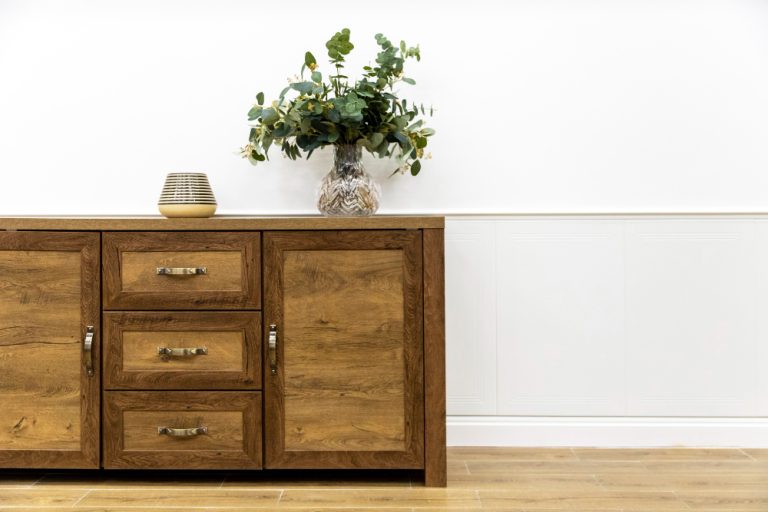A well-crafted garden fence does more than mark boundaries—it sets the tone for your entire outdoor space. The right design can add character, boost privacy, and even spark compliments from curious neighbors.
Plain pickets and standard panels might do the job, but a personalized fence tells a richer story. With a little creativity and some basic tools, anyone can build a garden border that reflects their style and enhances their green space. Reclaimed wood, upcycled materials, and unexpected finishes offer endless inspiration.
From rustic charm to modern minimalism, each idea brings something special to the table. These DIY garden fence ideas aren’t just budget-friendly—they turn simple yards into standout sanctuaries. Ready to frame your garden with personality and flair?
Step beyond the ordinary and discover designs that grow beauty from the ground up. Let your fence become more than a boundary—it’s the first impression of your garden’s soul.

DIY Garden Fence Ideas

A garden fence does many things. It keeps animals out. It gives you privacy. It makes your garden look nice. You can build a fence yourself. This saves money. It also lets you make a fence you really like. Building something with your own hands feels good.
This guide gives you 10 ideas for a DIY garden fence. These ideas use different materials. Some are easy. Some need a little more work. All ideas will help you make your garden a special place. Find an idea that fits your garden, your budget, and your skills. Let’s start building!
Why Build Your Own Garden Fence?
Building your own garden fence has good points. You save money. Buying a ready-made fence and paying someone to install it costs a lot. DIY saves much of that cost. You only pay for materials.
You get exactly what you want. You choose the style, the height, the material, and the color. Your fence can be unique. It matches your garden and your home perfectly. Nobody else will have the exact same fence.
You feel proud. Making something useful and beautiful yourself is a great feeling. Every time you look at your garden fence, you will remember you built it. It is a fun project too. You can learn new skills. Maybe your family can help.
Things to Think About Before You Start

Before you grab your tools, think about a few things. Planning makes the job easier.
First, why do you need the fence? Is it to keep deer out? Or just rabbits? Maybe you want privacy from neighbors. Or perhaps it is just for looks, to frame your garden. The reason helps you choose the height and strength needed. A fence to stop deer must be tall. A fence for looks can be short.
Second, check local rules. Some towns have rules about fences. How tall can they be? What materials can you use? Where can you put them on your property line? Ask your local government office before you build. This avoids problems later.
Third, what is your budget? How much money can you spend on materials? Some materials cost more than others. Pallets can be free. New wood or metal costs more. Plan your budget first. Then choose materials you can afford.
Fourth, choose your materials. Think about looks. Think about how long they last. Think about how easy they are to work with. Wood looks natural but needs care. Metal lasts long but can rust. Bamboo is eco-friendly. Recycled items save money and help the planet.
Fifth, think about your skills. Are you good with tools? Some fence ideas are very simple. Others need more cutting, measuring, and building skill. Choose a project that matches what you can do. Start simple if you are new to DIY.
Okay, you thought about these things? Great. Now let’s look at some fun DIY garden fence ideas.
1: The Easy Pallet Fence

Pallets are wooden platforms. Trucks use them to move goods. Many stores get rid of old pallets. You can often find them for free or very cheap. Pallets make a rustic, strong fence. Perfect for a country look.
Materials:
-
Wooden pallets (enough for your fence length)
-
Wooden posts (4×4 inch posts work well)
-
Screws or nails
-
Concrete mix (optional, for stronger posts)
-
Shovel or post hole digger
-
Level
-
Saw (if you need to cut pallets)
-
Drill
-
Safety glasses and gloves
-
Paint or wood sealant (optional)
Steps:

-
Plan your fence line. Mark where the posts will go. Posts should be placed so a pallet can attach between two posts. Measure your pallets first.
-
Dig holes for the posts. Make the holes deep enough (about one-third the post height).
-
Place the posts in the holes. Use the level to make sure they are straight up and down.
-
Fill the holes around the posts. Pack the dirt tightly. For extra strength, mix concrete and pour it into the holes around the posts. Let the concrete set hard.
-
Prepare the pallets. Some pallets might need cleaning. You can leave them rough or sand them smooth. You can cut them to size if needed.
-
Attach the pallets to the posts. Lift a pallet between two posts. Use screws or nails to fix the pallet securely to the posts. Check it is level.
-
Connect the next pallet. Continue attaching pallets between the posts until your fence is complete.
-
Add a finish (optional). You can leave the wood natural. It will turn grey over time. Or you can paint or seal the wood. This protects it from weather and makes it last longer. Choose a color you like.
A pallet fence is fast to build. It reuses materials. Good for your wallet and the earth.
2: The Natural Bamboo Fence

Bamboo grows fast. It is strong and looks beautiful. A bamboo fence brings a calm, natural feel to your garden. You can buy bamboo poles or grow your own if you live in the right climate.
Materials:
-
Bamboo poles (choose the thickness and height you like)
-
Wooden posts (thinner posts like 2×2 inch can work)
-
Strong wire or outdoor rope (like sisal or synthetic)
-
Shovel or post hole digger
-
Drill
-
Level
-
Wire cutters or strong scissors
-
Safety glasses and gloves
Steps:
-
Set your wooden posts. Follow steps 1-4 from the Pallet Fence idea. Place posts closer together for bamboo, maybe every 4-6 feet.
-
Prepare the bamboo poles. Cut them to the same height if needed.
-
Drill holes in the bamboo. Drill two holes through each bamboo pole. One near the top, one near the bottom. Make the holes big enough for your wire or rope to pass through.
-
Drill holes in the wooden posts. Drill holes at the same heights as the holes in the bamboo. These holes will hold the wire or rope.
-
Thread the wire or rope. Start at one end post. Thread the wire through the post, then through the bottom hole of the first bamboo pole. Then through the next bamboo pole, and so on. Keep the bamboo poles close together.
-
Continue threading. When you reach the next wooden post, thread the wire through the hole in the post. Pull the wire tight. Secure the wire at the end post.
-
Repeat for the top wire. Thread another wire or rope through the top holes of the bamboo poles and posts. Pull it tight and secure it.
-
Check the fence. Make sure the bamboo poles are straight and tightly packed. Adjust as needed.
This fence looks exotic. It gives good privacy if the poles are close. Bamboo lasts quite well outdoors.
3: The Simple Wire Mesh Fence

Wire mesh is also called hardware cloth or chicken wire. It comes in rolls. This type of fence is great for keeping small animals out. It does not give much privacy. But it lets sun and air through. Very good for vegetable gardens.
Materials:
-
Roll of wire mesh (choose hole size based on animals you want to stop)
-
Wooden posts or metal T-posts
-
Staple gun (for wood posts) or wire clips (for T-posts)
-
Wire cutters
-
Post driver (for T-posts) or shovel/post hole digger (for wood posts)
-
Level
-
Work gloves
Steps:

-
Install your posts. Wooden posts need digging (see Pallet Fence steps). Metal T-posts are easier. You just hammer them into the ground using a post driver. Place posts about 6-8 feet apart. Use the level to keep them straight.
-
Unroll the wire mesh. Start at one end post. Stand the roll upright against the post.
-
Attach the mesh to the first post. Use a staple gun to fix the mesh wire firmly to a wood post. Use several staples. For T-posts, use the special clips that come with them or wrap wire around the post and mesh.
-
Stretch the mesh. Unroll the mesh towards the next post. Pull it tight as you go. A tight mesh looks better and works better. Ask a friend to help pull.
-
Attach mesh to the next post. Staple or clip the mesh to the second post. Keep the mesh straight and tight.
-
Continue along the fence line. Keep unrolling, stretching, and attaching the mesh to each post.
-
Cut the mesh. When you reach the end, cut the wire mesh with wire cutters. Attach it securely to the last post.
-
Check for gaps. Look along the bottom. Small animals can dig under. You can bury the bottom edge of the mesh a few inches deep. Or place rocks along the bottom.
This fence is practical. Quick to install. Very effective against many garden pests.
4: The Charming Wattle Fence

Wattle fences are ancient. People made them for hundreds of years. They use thin, flexible branches woven between posts. They look very natural and rustic. Perfect for a cottage garden style.
Materials:

-
Sturdy wooden posts or stakes (about 1-2 inches thick)
-
Long, flexible branches (willow, hazel, or other bendy wood works best, about 0.5-1 inch thick)
-
Mallet or hammer
-
Pruning shears or loppers
-
Work gloves
Steps:

-
Gather your branches (called weavers). You need many long, flexible branches. Freshly cut branches bend best. If they are dry, soak them in water for a few days to make them flexible again. Trim off side twigs.
-
Drive the posts (called uprights) into the ground. Space them about 1-2 feet apart along your fence line. Drive them deep enough to be sturdy. Keep them straight.
-
Start weaving. Take your first long branch. Start at one end of the fence. Weave the branch in and out of the upright posts. Go behind the first post, in front of the second, behind the third, and so on.
-
Push the weaver down. Gently push the woven branch down towards the ground. Keep it snug against the posts.
-
Weave the next branch. Start the second branch on the opposite side from the first one. If the first went behind the first post, start the second in front of it. Weave it across.
-
Continue weaving. Keep adding branches, alternating the weave pattern. Push each row down tightly onto the one below it.
-
Build up the height. Continue weaving until the fence reaches the height you want.
-
Trim the ends. Use pruning shears to trim any branch ends sticking out too far. Tuck ends in where possible.
Wattle fences look wonderful. They use natural materials you might find for free. They need replacing every few years as the wood decays. But making them is fun.
5: The Sturdy Log Fence

Have some old logs or thick branches lying around? Use them to build a simple, strong fence. This works well for marking a boundary. It has a very natural, woodland look.
Materials:
-
Logs or thick branches (similar length and thickness if possible)
-
Sturdy wooden posts (thicker ones like 4×4 or round posts)
-
Long screws or metal rebar pins
-
Drill with a large drill bit (if using rebar)
-
Shovel or post hole digger
-
Level
-
Saw (to cut logs if needed)
-
Safety glasses and gloves
Steps:

-
Install the posts. Dig holes and set your posts firmly in the ground. Space them based on the length of your logs. Maybe 6-8 feet apart. Make sure they are level and straight.
-
Prepare the logs. Cut logs to fit between the posts if needed. You can leave the bark on for a rustic look or peel it off.
-
Attach the first layer of logs. Place the first log on the ground between two posts. You can secure it by drilling angled holes through the log ends and into the posts, then driving in long screws. Or just let it rest on the ground.
-
Stack the next log. Place the second log on top of the first one.
-
Secure the stacked logs (Option 1: Screws). Drill angled screws through the top log into the bottom log in a few places. Also screw the ends of the top log into the posts.
-
Secure the stacked logs (Option 2: Rebar). Drill vertical holes down through the top log and partway into the log below it. Hammer a piece of metal rebar into the hole. This pins the logs together. Do this near the ends and in the middle.
-
Continue stacking. Add more logs, securing each layer, until the fence reaches your desired height. Check for stability.
-
Repeat for all sections. Build up the log fence between all the posts.
A log fence is solid. It blends well with wooded areas. It uses heavy materials, so get help lifting if needed.
6: The Quirky Upcycled Fence

Get creative! Use old things to make a fence. Old doors, old windows, old shutters, even old bicycle wheels can become part of a unique garden fence. This is great for artistic gardens. It saves items from the landfill.
Materials:
-
Your chosen upcycled items (doors, windows, shutters, etc.)
-
Wooden posts (4×4 inch or similar)
-
Screws, bolts, hinges, or strong wire (depends on items used)
-
Shovel or post hole digger
-
Level
-
Drill
-
Saw (if needed to adjust items)
-
Paint (optional)
-
Safety glasses and gloves
Steps:

-
Gather your items. Collect interesting old doors, windows without glass, or other flat, sturdy items. Clean them up.
-
Plan the layout. Arrange your items on the ground to see how they fit together. Decide where posts are needed to support them.
-
Install the posts. Set sturdy posts in the ground where needed. Use concrete for heavy items like doors.
-
Attach the items. This depends on what you are using.
-
Doors: You can hinge them to posts, or screw them directly to posts. Stand them upright.
-
Windows (frames only): Screw them between posts. You can overlap them or set them side by side.
-
Shutters: Screw them vertically or horizontally to posts or a wooden frame.
-
-
Fill gaps. Use smaller items, planks of wood, or even wire mesh to fill any large gaps between your main pieces if needed.
-
Secure everything well. Make sure all pieces are firmly attached and the fence is stable. Use strong screws or bolts.
-
Paint (optional). You can paint everything one color for a unified look. Or paint each item a different bright color for fun. Or leave them with their old, weathered paint.
An upcycled fence shows your personality. It is a conversation starter. Be sure items are safe (no broken glass) and securely fixed.
Idea 7: The Low Stone Wall Fence

A low stone wall is more like a border than a tall fence. But it clearly marks the edge of a garden bed or path. It looks timeless and natural. You can use stones found on your property (dry stack) or buy landscaping stones.
Materials:

-
Stones (flat stones work best for stacking)
-
Shovel
-
Level
-
Work gloves
-
Rubber mallet (optional)
Steps:

-
Prepare the base. Dig a shallow trench along your fence line. Maybe 4-6 inches deep and a bit wider than your stones.
-
Level the trench bottom. Make the bottom of the trench flat and level. You can add a layer of gravel for better drainage if you like. Tamp it down firmly.
-
Lay the first course (layer) of stones. Choose your largest, flattest stones for the base. Place them tightly together in the trench. Use the level to check they are flat. Fill gaps with smaller stones.
-
Lay the second course. Place the next layer of stones on top of the first. Stagger the joints like bricks. This means the middle of a stone on the second layer should sit over the gap between two stones on the first layer. This makes the wall stronger.
-
Continue stacking. Keep adding layers of stones. Choose stones that fit well together. Tilt the stones slightly inwards towards the center of the wall for stability. Use the rubber mallet gently to tap stones into place if needed.
-
Build to desired height. Keep stacking until the wall is as high as you want it. Low walls (1-2 feet) are easier to build without mortar.
-
Finish the top. Use flat, stable stones for the top layer (capstones).
A dry stack stone wall needs no cement. It allows drainage. It looks beautiful with plants growing over it. Building takes patience to find stones that fit.
8: The Tire Planter Fence

Old car tires can be reused in the garden. Stack them up to make a wall. Fill them with soil and plant flowers or herbs. This creates a living fence border. Good for the environment too.
Materials:
-
Old car tires (ask local garages)
-
Strong landscape fabric or plastic sheeting
-
Drill
-
Staple gun or strong tape
-
Good quality potting soil
-
Plants or seeds
-
Work gloves
Steps:

-
Clean the tires. Wash off any dirt or grease from the tires.
-
Prepare the base. Level the ground where the tire fence will go.
-
Place the first layer of tires. Lay the tires side-by-side along the fence line.
-
Prepare tires for planting. For each tire, cut a circle of landscape fabric or plastic slightly larger than the tire’s central hole. Use the drill to make a few drainage holes in the fabric/plastic.
-
Line the bottom of the tires. Place the fabric/plastic circle inside the tire, covering the bottom opening. Staple or tape it securely to the inside bottom edge of the tire wall. This stops soil falling through.
-
Stack the next layer (optional). You can stack tires two or three high for more height. Stagger them like bricks for stability. Make sure they are secure. You might drill holes and bolt them together for safety if stacking high.
-
Fill with soil. Fill each tire cavity with good potting soil.
-
Plant your plants. Plant flowers, herbs, or trailing plants in the soil inside each tire. Choose plants suitable for containers.
-
Water well. Water your new tire planters.
This fence is unique. It adds greenery and color. Make sure tires are cleaned well. Some people worry about chemicals from tires; lining them helps.
9: The Simple Post and Rope Fence

This fence is mostly decorative. It suggests a boundary without blocking views. It looks great in coastal or country settings. Very easy to install.
Materials:
-
Wooden posts (round or square, choose a nice style)
-
Thick rope (natural fiber like manila, or synthetic outdoor rope)
-
Drill with a spade bit (slightly larger than rope diameter)
-
Shovel or post hole digger
-
Level
-
Measuring tape
-
Saw (to cut posts if needed)
-
Sandpaper (optional)
-
Wood sealant or paint (optional)
Steps:

-
Prepare the posts. Cut posts to your desired height. Sand any rough edges. You can paint or seal them now if you want.
-
Set the posts. Dig holes and set the posts firmly in the ground. Space them evenly, maybe 6-8 feet apart. Use the level to ensure they are straight.
-
Mark hole locations. Decide how many rows of rope you want (one or two is common). Measure and mark the points on each post where you will drill holes for the rope. Keep the marks level across all posts.
-
Drill the holes. Use the spade bit to drill holes all the way through the posts at your marked spots.
-
Thread the rope. Start at one end post. Feed the rope through the first hole. Leave some extra rope at the start.
-
Weave the rope through posts. Continue feeding the rope through the corresponding holes in the next posts. Pull the rope taut, but allow a slight sag between posts for a nice look. Don’t pull it super tight.
-
Secure the rope ends. At the last post, pull the rope through. Cut the rope, leaving some extra. Tie a thick knot on the outside of the first and last posts to stop the rope slipping back through the holes. You can also use rope clamps or wrap wire tightly around the ends.
-
Repeat for other rows. If you want a second row of rope, repeat steps 5-7 using the lower set of holes.
A post and rope fence is elegant. Simple to make. Does not provide security or keep animals out well. Purely for looks and marking space.
10: The Living Fence (Hedge)

The most natural fence is made of plants. A hedge is a row of closely planted shrubs or small trees. It grows into a dense barrier. It provides privacy, blocks wind, and is beautiful. It takes time to grow.
Materials:

-
Hedging plants (choose species suited to your climate and desired height, e.g., boxwood, privet, arborvitae, yew)
-
Shovel or spade
-
Compost or garden soil
-
Mulch
-
Watering can or hose
-
Pruning shears (for later maintenance)
Steps:

-
Choose your plants. Research hedging plants that grow well in your area. Consider how tall and wide they get. Decide if you want evergreen (green all year) or deciduous (loses leaves in winter). Buy small plants; they are cheaper and establish well.
-
Prepare the planting area. Clear a strip of ground along your fence line. Remove weeds and grass. Dig a trench or individual holes for the plants. The trench should be as deep as the plant root balls and about twice as wide. Improve the soil by mixing in compost.
-
Space the plants. Place the plants in the trench or holes. Space them according to the plant label recommendations. Closer spacing makes a denser hedge faster. But don’t overcrowd them.
-
Plant the shrubs. Gently remove plants from their pots. Place them in the holes so the top of the root ball is level with the ground. Fill the hole back with the improved soil. Gently firm the soil around the roots.
-
Water thoroughly. Water the newly planted hedge deeply.
-
Apply mulch. Spread a layer of mulch (like bark chips or straw) around the base of the plants. This helps keep moisture in and weeds out.
-
Water regularly. Keep the soil moist, especially during the first year while the plants establish roots.
-
Prune as needed. Once established, prune the hedge regularly (usually once or twice a year) to shape it and keep it dense. Follow pruning advice for your chosen plant species.
A living fence takes time. Maybe 3-5 years to become a solid barrier. But it is beautiful, good for wildlife, and lasts for many years with care. Patience pays off.
Frequently Asked Questions (FAQs)
Q1: How tall should my garden fence be?
Think about why you need the fence. For decoration, 2-3 feet might be enough. To keep out small animals like rabbits, 3 feet might work. To keep out larger animals like deer, you need at least 6-8 feet. For privacy, 6 feet is usually good. Check local rules too, as they might limit fence height.
Q2: Do I need permission to build a fence?
Maybe. Many towns have rules about fences. Rules might cover height, materials, and how close to your property line you can build. Sometimes you need a permit. Always check with your local city or county planning office before you start building. Ask your neighbors too; it’s polite.
Q3: What is the cheapest DIY fence?
Pallet fences can be almost free if you find free pallets. Wire mesh fences with T-posts are also quite cheap. Wattle fences can be free if you have access to flexible branches. The cost depends mostly on the materials you choose.
Q4: How do I make my DIY fence last longer?
Choose durable materials like cedar wood, treated pine, metal, or bamboo. For wood fences, apply a good quality paint or sealant. Reapply it every few years.
Make sure posts are set firmly, maybe in concrete. Keep plants from growing right against the fence, as moisture can cause rot. Fix any damage quickly.
Q5: Can I paint my DIY fence?
Yes! Painting protects wood fences from sun and rain. It also lets you choose a color that matches your garden or house. Use outdoor paint or wood stain.
You can paint pallet fences, log fences, post and rope fences, and upcycled fences. Stone, wire, bamboo, and living fences usually look best natural.
Conclusion
Building your own garden fence is a rewarding project. You save money. You get a fence that is perfect for your needs and style. You learn skills and feel proud of your work.
We looked at 10 different ideas. From easy pallet fences to natural wattle fences. From practical wire mesh to creative upcycled designs. There is an idea for every garden and every skill level.
Remember to plan first. Think about why you need the fence, check local rules, set a budget, choose materials, and pick a project you feel comfortable doing. Take your time. Work safely. Ask friends or family for help if needed.
Your garden is your special space. A DIY fence you build yourself makes it even more special. Enjoy the process. Enjoy your beautiful new garden fence!
Explore More:







